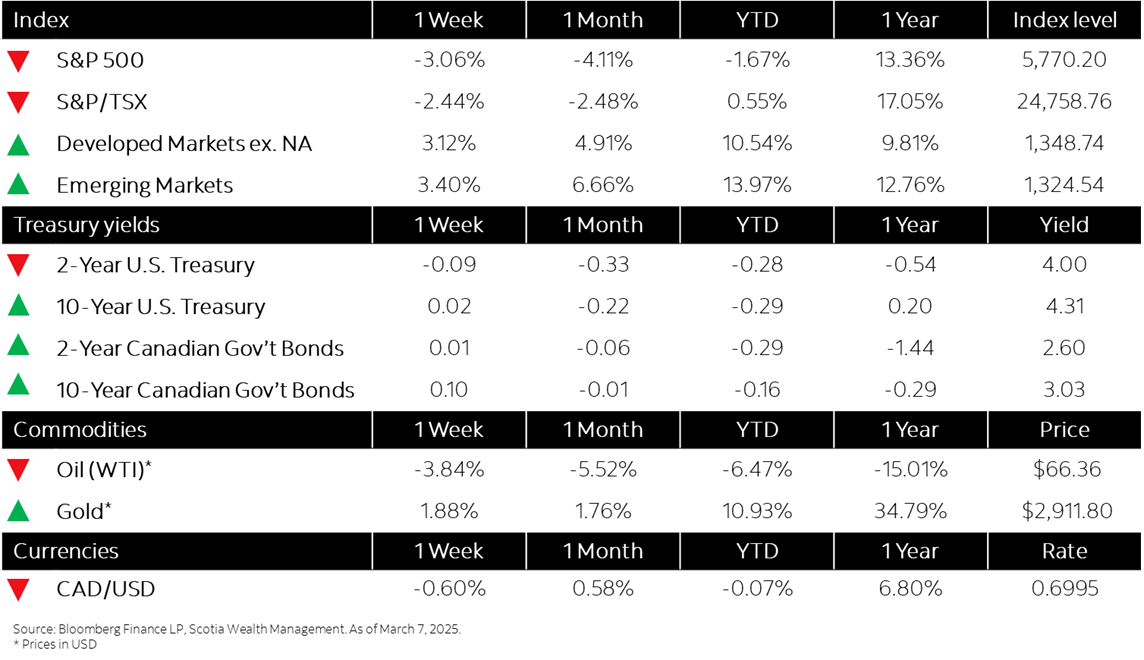
Market Watch: March 7, 2025
This week’s highlights
- North American markets experience worst week in six months
- Bonds falter amid volatile week of trading
- Canada’s trade surplus in January exceeds expectations, jumps to nearly $4 billion
- U.S. factory activity eased as tariffs threats spark accelerating costs
- ECB cuts rates to guard stalled economy against tariff threats
Week in review
North American markets experience worst week in six months



